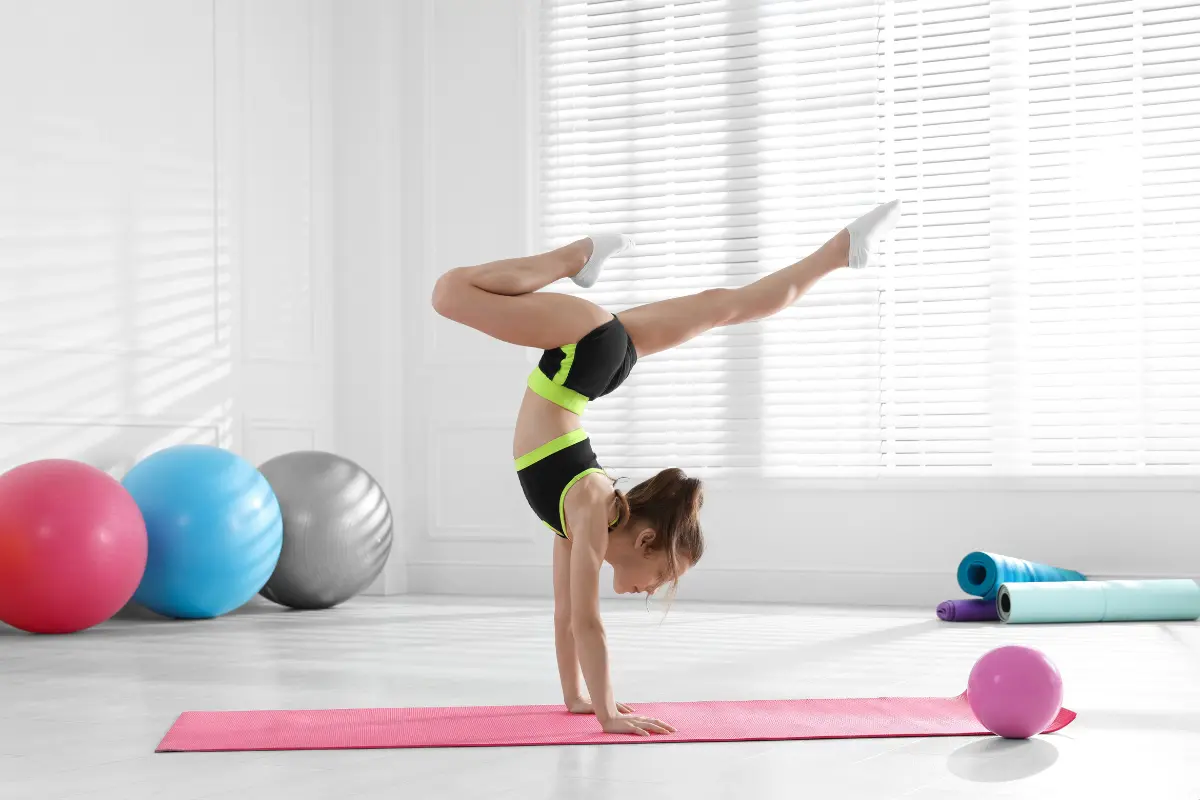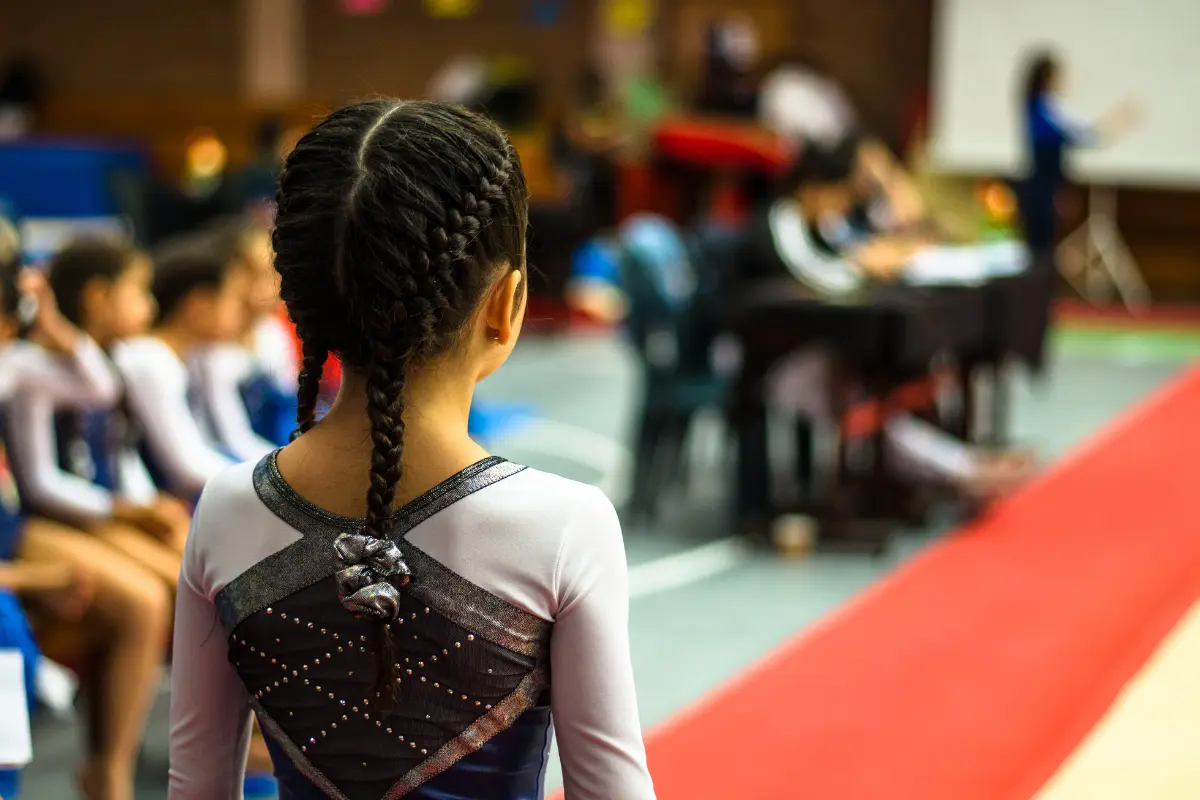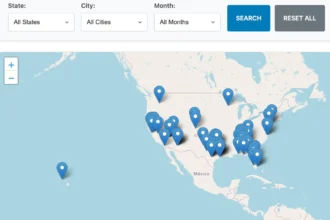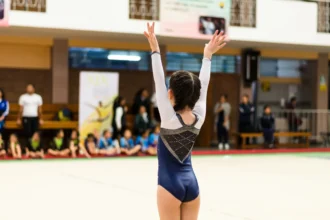Gymnastics – a sport that conjures images of graceful athletes soaring through the air, performing jaw-dropping feats of strength and flexibility. But did you know that you can start your gymnastics journey right in your living room, with nothing more than your own body and determination?
Gymnastics Basics: Why Start with No Equipment?
Starting gymnastics without equipment is an ideal way for beginners to build strength, balance, and flexibility without the added complexity of using apparatus. This approach allows beginners to improve safely, minimizing the risk of injury by concentrating on proper form and technique.
Training without equipment is also affordable and accessible—requiring only a soft surface and some open space—making it easy to practice at home consistently. With no barriers to start, you can take things at your own pace, gradually building confidence and strength.
1. Creating a Safe Practice Space
Creating a safe practice space is essential when doing gymnastics at home. Start by choosing a spacious area free from obstacles like furniture, decor, or any items on the floor.
This ensures you have enough room to move without the risk of bumping into anything. A soft surface is also key to protecting your joints and cushioning any falls, so use a yoga mat, thick rug, or blanket. Avoid practicing on slippery floors, as they increase the chance of slipping or losing balance.
Good lighting is important, too. Make sure your practice area is well-lit so you can see your movements clearly. For certain skills, like handstands, practicing near a wall can offer support, but ensure you’re at a safe distance in case you need to lower yourself down quickly.
Lastly, wear comfortable, form-fitting clothing that won’t restrict your movement or get in the way during exercises. With a safe, well-prepared space, you can focus fully on your practice without unnecessary distractions or risks.
2. Warm Up for Injury Prevention
Proper warm-ups are essential for preparing muscles and reducing injury risk. Spend 5-10 minutes with these exercises:
- Jumping Jacks: 1-2 minutes to get your blood flowing.
- Arm Circles: Warm up your shoulder joints with small and large circles.
- Leg Swings: Swing each leg forward and backward to loosen your hip joints.
- Dynamic Stretches: Include lunges, high knees, and torso twists to mobilize your entire body.
Beginner Gymnastics Skills You Can Practice at Home
Here are beginner gymnastics skills you can safely practice at home, with no specialized equipment required.
1. Handstand
The handstand is foundational in gymnastics, appearing across all apparatuses and routines. A strong, controlled handstand builds strength and balance while improving body alignment.
- How to Practice: Start by kicking up against a wall for support. Focus on aligning your body in a straight line, squeezing your core, and keeping your legs together.
- Key Tips: Keep your body tight, wrists under your shoulders, and toes pointed. Work on holding your handstand without the wall for balance development.
- Progression: Once you feel stable, try moving your handstand away from the wall for a freestanding attempt.
2. Bridge
A bridge is essential for flexibility and strength, especially in the shoulders and back. It also lays the groundwork for more advanced skills, such as walkovers and backbends.
- How to Practice: Lie on your back, bend your knees, and place your hands by your shoulders. Push through your arms and legs to lift your body off the floor.
- Key Tips: Push through your shoulders and open your chest for a deeper stretch. Keep your hands and feet pressed firmly into the ground for stability.
- Progression: As you get more comfortable, work on extending your legs and holding the bridge for longer periods.
3. Cartwheel
The cartwheel is a staple beginner gymnastics skill that builds coordination and confidence. It also serves as a building block for more complex skills like round-offs.
- How to Practice: Begin with one foot in front and arms raised. As you start, reach down with one hand and kick your legs up and over, landing in a similar lunge on the opposite side.
- Key Tips: Focus on keeping your legs straight and toes pointed. If you’re feeling steady, practice cartwheeling on a line or a low beam for added challenge.
- Progression: Once you’ve mastered a standard cartwheel, try it in different directions or with different starting and ending positions.
4. Scale
The scale involves balancing on one leg while lifting the other behind you, which is great for improving core stability and leg strength. This skill also helps with balance, which is essential for beam routines.
- How to Practice: Stand on one leg and lift the other behind you, keeping it straight and parallel to the ground. Extend your arms for balance.
- Key Tips: Squeeze your core and engage your standing leg to avoid wobbling. Try to hold the position without moving or tilting.
- Progression: Experiment with different types of scales, such as front and side scales, for additional balance training.
5. Leaps
Leaps add elegance and fluidity to routines, especially on the floor and beam. Practicing leaps helps develop leg power and flexibility.
- How to Practice: Begin in a standing position. Push off one foot to leap, focusing on getting as much height as possible while extending your legs into a split mid-air.
- Key Tips: Keep both legs straight, and point your toes. Aim for a split of at least 90 degrees for a well-executed leap.
- Progression: As you improve, work on leap sequences to build stamina and refine your form.
6. Pivot Turn
The pivot turn is essential for smooth transitions on the beam and floor. Practicing it enhances balance, control, and fluidity of movement.
- How to Practice: Stand on one foot and rise onto the ball of your foot, then turn 180 degrees in place. Finish with your foot pointed and your body tight.
- Key Tips: Engage your core and squeeze your glutes to stay steady. Use your arms for balance and control.
- Progression: Once you master the half turn, work towards full turns (360 degrees) for a greater challenge.
7. Squat Turn
A squat turn, featured in Level 4 and 5 beam routines, is a lower-body strength move that requires balance and precision.
- How to Practice: Start in a standing position and squat down. As you squat, turn your body and then stand back up.
- Key Tips: Engage your core and maintain tight form throughout the turn to prevent wobbling.
- Progression: Practice holding your squat position before and after the turn to develop strength and stability.
8. Straight Jump
The straight jump is one of the most fundamental skills but is crucial for establishing good jumping mechanics and body control.
- How to Practice: Start with your feet together, then bend your knees slightly and jump straight up, keeping your body in a rigid, straight line.
- Key Tips: Push through the balls of your feet and maintain a tight body position. Keep your core engaged to prevent arching or bending at the waist.
- Progression: Work on jumping higher and maintaining your straight position throughout the jump. You can also add arm variations for a different challenge.
9. Split Jump
Split jumps showcase flexibility and strength, making them a valuable skill on both floor and beam routines. This skill also incorporates a split position, which enhances leg control.
- How to Practice: Begin in a standing position, push off the ground, and split your legs in the air. Aim to get as close to a 180-degree split as possible.
- Key Tips: Keep your legs tight and your toes pointed. Focus on landing with control, and avoid leaning forward or backward.
- Progression: Work on height and control in your split jump, trying to hold your split position a little longer in the air.
Building Your Practice Routine
Set aside a minimum of 15-20 minutes daily to practice a mix of these skills. Begin each session with a warm-up, practice 2-3 skills, and finish with stretching.
Here’s a sample structure to follow throughout the week:
| Day | Skills | Focus Area |
|---|---|---|
| Monday | Handstand, Cartwheel, Bridge | Balance and Flexibility |
| Tuesday | Leaps, Pivot Turn, Split Jump | Power and Form |
| Wednesday | Handstand, Scale, Straight Jump | Core and Alignment |
| Thursday | Leaps, Cartwheel, Squat Turn | Leg Strength and Balance |
| Friday | Handstand, Bridge, Split Jump | Flexibility and Strength |
| Saturday | Review and Freestyle Practice | Skill Reinforcement |
| Sunday | Rest Day | Recovery |
Key Tips for Building Consistency
- Set Small Goals: Focus on specific improvements, like holding a handstand longer or achieving a higher leap.
- Track Progress: Write down what you practiced and any notes on improvement to stay motivated.
- Stay Patient: Consistency is more important than perfection. Each session builds on the last, so keep practicing at your own pace.
With a routine like this, you’ll build a solid gymnastics foundation that strengthens core skills and flexibility over time!






